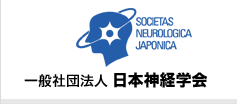- HOME
- Vol.55 No.9
- CLINICA NEUROL, 55: 637−645, 2015
- Vol.55 No.9 contents
Original Article
Survey of the actual state of medical care of patients with Duchenne muscular dystrophy in Japan
Tsuyoshi Matsumura, M.D., Ph.D1), Hirofumi Komaki, M.D., Ph.D.2) and Mitsuru Kawai, M.D., Ph.D.3)
1)Department of Neurology, National Hospital Organization Toneyama National Hospital
2)Department of Child Neurology, National Center of Neurology and Psychiatry
3)Department of Neurology, National Hospital Organization Higashisaitama National Hospital
It has been suggested that many physicians feel it is difficult to manage patients with Duchenne muscular dystrophy (DMD) and that support from experts is required. Therefore, to assess the effects of Japanese practical guidelines for DMD, we distributed a survey questionnaire to certified neurologists and child neurologists in Japan. The survey revealed the actual state of medical care for patients with DMD in Japan prior to publication of guidelines. Many pediatric patients visited academic medical centers (AMCs) and general hospitals (GHs). In contrast, adult patients visited mainly National Hospital Organization (NHO) hospitals and other hospitals that can manage cardiopulmonary care and inpatient therapy. Medical insurance approval for steroid therapy was well known by subjects surveyed. Beta-blockers and angiotensin converting enzyme inhibitors were widely used as cardioprotective agents. However, the rates of obtaining written informed consent before genetic testing, regular radiological testing for scoliosis, usage of mechanical-assisted cough, disaster response plan instruction for patients receiving mechanical ventilation, and management of patients with female dystrophinopathy were below satisfactory. More than 20% of doctors surveyed practiced or recommended muscle strengthening training. Although the details of the training were not specified, this may indicate overuse of resistance training exercises. Our goal is to promote an educational campaign to better disseminate best practice care and clinical guidelines. We plan to conduct another round of surveys in several years to assess the effects of the clinical guidelines.
Full Text of this Article in PDF (1383K)
(CLINICA NEUROL, 55: 637−645, 2015)
key words: Duchenne muscular dystrophy, clinical guidelines, investigation of actual state of medical care, questionnaire, standard care
(Received: 10-Mar-15)


